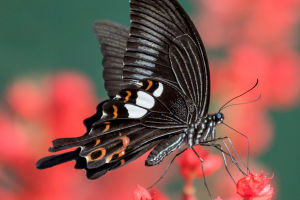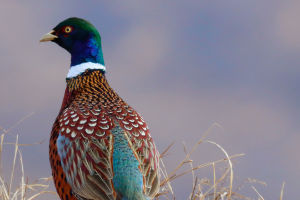The variety of butterfly species and the richness of the colors and patterns of their wings have been studied and analyzed to find the natural coordination.
Patterns of color contrast have been identified, which have been used in the color design of various artworks and textiles.
In the textile process, many chromatograms have been analyzed from the colors of butterfly wings using the spectrum, providing clothing designers with a wide range of blending colors, which can be used for trims and clothing color matching, giving people a sense of beauty.
The colors and patterns of the butterfly wings can be used to create a variety of patterned fabrics.
The shimmer in textiles also makes use of the principle of scaly wing shimmer, which allows the fabric to appear in different colors from different angles. This can also be described as bionic in the broadest sense of the word.
Butterflies are very popular because of their bright colors.
There are many butterfly motifs in artworks throughout the ages. Butterflies and gourds form a pattern that represents good luck, butterflies and flowers work together to make a vivid and natural picture, and pairs of butterflies represent a symbol of love.
The butterfly and the melon are used to represent good luck, the butterfly and the flowers are used to make a vivid and natural picture, and the pair of butterflies represents the symbol of love.
There are many more butterfly designs in fabrics, embroideries, and handicrafts, and some artists use beautiful and colorful butterfly wings in collages to create butterfly wing paintings of great artistic value.
The butterfly is the most beautiful of insects, the face of the insect kingdom, and is known as the 'flying flower', a symbol of refined culture. The beautiful butterfly emerges from the chrysalis of a caterpillar. Throughout thousands of years of human history, the butterfly has symbolized both the fleeting nature of life and the cycle of life.
The butterfly element has always been a hit with girls and many jewelry brands use it as an accent to create stylish looks.
Heliconius Erato
Heliconius Erato is found mainly in Brazil, and South America, and as a species, it has been on the planet for millions of years, but as an 'insect star,' it has only been known and loved for 200 years.
Heliconius Erato is a colorful mix of red, white, and black.
The bright red color on the wings is a warning to potential enemies.
The transmission of this signal is called the alerting effect.
When the animals have settled down for the night, Heliconius erato will often gather in groups of four or five for the night. The purpose is to reduce the likelihood of an attack, possibly due to the bright colors on their wings, which are often considered to be highly poisonous, and this effect is even more pronounced when they are grouped together.
The results of the Royal Society Journal study claim that co-roosting butterflies do more than share the danger: each of the five co-roosting butterflies when seen as a whole, is less likely to be attacked than those that roost alone.


